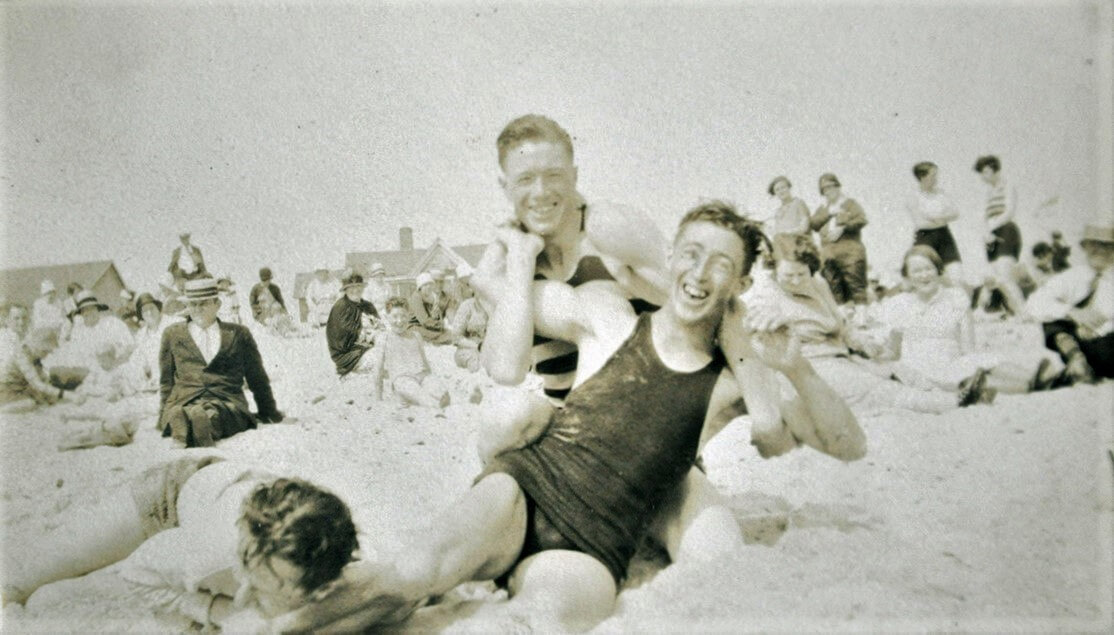Special series
How fire districts block access to Rhode Island's shoreline
Featured Stories
Rhode Island boasts of its nearly 400 miles of shoreline, yet the state’s eight public saltwater beaches border less than seven miles of that waterfront. Much of the remaining land along the shore is privately owned. The public has the legal right to the coastal waterfront, but wealthy shoreline communities are getting more exclusive. Special fire districts—which sometimes don’t even fight fires at all—are a big factor in the growing tensions over shoreline access.
The story of shoreline access in many parts of Rhode Island is one of haves and have nots. Come summer, fortunate oceanside property owners have it. Others have to fight for parking spots and somewhere to lay their beach blankets. The Quonochontaug Barrier Beach in Westerly and Charlestown is one place largely cut off to the public. For years, people used it freely. But today the beach is tightly controlled by a network of fire districts and conservation groups that has made it a flashpoint in the growing debate over shoreline access.
More: Explore a timeline of how the Quonochontaug Barrier Beach was privatized.
In South County, several shoreline fire districts bring in hundreds of thousands of dollars in taxes and other revenue annually but spend much of it on expenses more in line with a private beach club, not a fire department. That has drawn the ire of beachgoers who are being blocked from the shore.
Timeline:
How the Quonochontaug Barrier beach was privatized

Weekapaug emerges as a summer destination for day visitors, vacationers, and second home owners.


The Weekapaug Inn opens on the Quonochontaug Barrier Beach. The hotel draws a wealthier crowd from cities around the East Coast, Midwest, and even down to Memphis. It’s one of several exclusive spots for Weekapaug accommodations.


The Weekapaug Beach & Land Improvement Company forms, becoming a major landowner on the barrier beach. The real estate firm eventually renames itself the Weekapaug Beach Company, which transfers holdings to the Weekapaug Fire District.
The Rhode Island General Assembly issues a charter to form the Weekapaug Fire District, a quasi-municipal entity that can raise taxes for the “purpose of purchasing and maintaining fire prevention equipment.”


The Hurricane of 1938 rips through the Northeast, destroying cottages on the barrier beach as well as the Weekapaug Inn, which reopens further inland.

The Weekapaug Fire District is granted an amendment to its charter, allowing the district to purchase and hold land. The district then buys substantial holdings on the barrier beach, including plats from the Weekapaug Beach Company.

The Weekapaug Fire District increases its holdings on the barrier beach and now owns nearly half the peninsula.

Two new conservation foundations are established.
The Weekapaug Foundation for Conservation is formed in 1989 with the stated purpose of “relieving the financial burdens of the Weekapaug Fire District.” The foundation also buys property from the Weekapaug Fire District.
And in 1991, the nonprofit Nope’s Island Association for Conservation is formed and takes control of land previously held by the Nope’s Island Association. Today, the conservation group owns most of the barrier beach land not held by the Weekapaug Fire District.

Following a legal dispute between the Town of Westerly and the Weekapaug Fire District, an agreement is reached stating the fire district owns the sandtrail down the center of the barrier beach that the public used for years. People can pass on it with tight restrictions, but the agreement includes no paths to the public shoreline

Shoreline access advocates raise questions over whether a right of way at the start of the barrier beach is public. The Weekapaug Fire District says it owns the now blocked path, which appears on property maps as unplatted land. The state Coastal Resources Management Council is currently reviewing whether the land should be designated as a public right of way.
Connect With Us

Alex Nunes,
South County Reporter

Sally Eisele and Jeremy Bernfeld edited this series. Sofie Rudin produced the maps, webpage and other digital elements.
The Public’s Radio takes pride in serving you by providing well-researched, thought provoking journalism you can trust.

Share Our Reporting
The Public’s Radio is made possible by people just like you. Thank you for your support.







